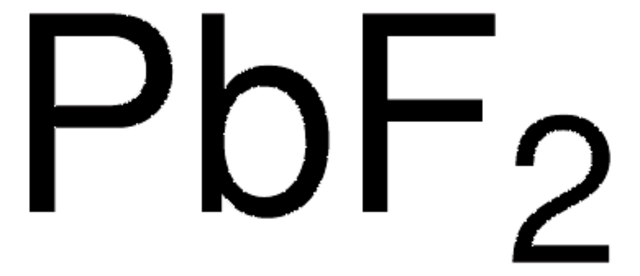229806
Phosphate de potassium monobasic
99.99% trace metals basis
Synonyme(s) :
Dihydrogénophosphate de potassium, Phosphate de potassium prim., Phosphate monopotassique
About This Item
Produits recommandés
Niveau de qualité
Pureté
99.99% trace metals basis
Forme
solid
Impuretés
≤150.0 ppm Trace Metal Analysis
pKa (25 °C)
(1) 2.15, (2) 6.82, (3) 12.38 (phosphoric acid)
Pf
252.6 °C (lit.)
Densité
2.338 g/mL at 25 °C (lit.)
Chaîne SMILES
[K+].OP(O)([O-])=O
InChI
1S/K.H3O4P/c;1-5(2,3)4/h;(H3,1,2,3,4)/q+1;/p-1
Clé InChI
GNSKLFRGEWLPPA-UHFFFAOYSA-M
Vous recherchez des produits similaires ? Visite Guide de comparaison des produits
Description générale
Application
- to produce flurescence emmisionin carbon dots
- buffers
- pH control agent
- emulsifier
- stabilizer
- water retention agent,
- antioxidant in foods
Code de la classe de stockage
11 - Combustible Solids
Classe de danger pour l'eau (WGK)
WGK 1
Point d'éclair (°F)
Not applicable
Point d'éclair (°C)
Not applicable
Équipement de protection individuelle
Eyeshields, Gloves, type N95 (US)
Faites votre choix parmi les versions les plus récentes :
Certificats d'analyse (COA)
Vous ne trouvez pas la bonne version ?
Si vous avez besoin d'une version particulière, vous pouvez rechercher un certificat spécifique par le numéro de lot.
Déjà en possession de ce produit ?
Retrouvez la documentation relative aux produits que vous avez récemment achetés dans la Bibliothèque de documents.
Les clients ont également consulté
Notre équipe de scientifiques dispose d'une expérience dans tous les secteurs de la recherche, notamment en sciences de la vie, science des matériaux, synthèse chimique, chromatographie, analyse et dans de nombreux autres domaines..
Contacter notre Service technique

